| Srl | Item |
| 1 |
ID:
160990


|
|
|
|
|
| Summary/Abstract |
With the continued use of unsafeguarded naval nuclear-propulsion programs in all nuclear-weapon states, the commissioning of an Indian nuclear submarine, and the potential investment in such programs by non-nuclear-weapon states including Brazil and South Korea, movement toward a regulatory regime for nuclear material in the naval sector has become imperative. Such a framework faces a recurring debate on adequately protecting sensitive military technology while delivering assurances that naval nuclear material is not diverted to nuclear-weapon programs. In this viewpoint, we examine various prospective mechanisms to regulate naval nuclear stocks and assess them in terms of their effectiveness and scope. Drawing on lessons from the drafting, negotiation, and implementation of the Model Additional Protocol, we recommend a safeguards regime for naval nuclear material via a protocol that supplements the existing global nuclear-governance system. This protocol provides a standardized yet flexible approach to naval nuclear-material safeguards across all states (whether nuclear-weapon states, non-nuclear-weapon states, or outside the Treaty on the Non-Proliferation of Nuclear Weapons) to handle variations among naval nuclear fuel cycles and technologies.
|
|
|
|
|
|
|
|
|
|
|
|
|
|
|
|
| 2 |
ID:
142389


|
|
|
|
|
| Summary/Abstract |
The July 14 agreement between Iran and the six-country group known as the P5+1 established a set of important limitations and related transparency measures on Iran’s nuclear activities.
|
|
|
|
|
|
|
|
|
|
|
|
|
|
|
|
| 3 |
ID:
084021
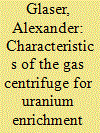

|
|
|
|
|
| Publication |
2008.
|
| Summary/Abstract |
This article presents an analytical model, originally developed in the 1980s, for the gas centrifuge and uses this methodology to determine the main design and operational characteristics of several hypothetical centrifuge designs. A series of simulations for a typical first-generation machine is used to assess the relevance of important breakout scenarios, including batch recycling and cascade interconnection, using either natural uranium or preenriched material as feedstock.
|
|
|
|
|
|
|
|
|
|
|
|
|
|
|
|
| 4 |
ID:
104162
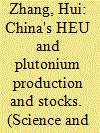

|
|
|
|
|
| Publication |
2011.
|
| Summary/Abstract |
This article discusses the history of China's production of highly enriched uranium and plutonium for nuclear weapons and uses new public information to estimate the amount of highly enriched uranium and plutonium China produced at its two gaseous diffusion plants and two plutonium production complexes. The new estimates in this article are that China produced 20 ± 4 tons of HEU, 2 ± 0.5 tons of plutonium, and currently has stockpiles of about 16 ± 4 tons of HEU and 1.8 ± 0.5 tons of plutonium available for weapons. The values for China's fissile material production are at the low end of most previous independent estimates, which range from 17-26 tons of highly enriched uranium and 2.1-6.6 tons of plutonium. These new estimates would be significant to assess China's willingness to join a fissile material cutoff treaty and a multilateral nuclear disarmament.
|
|
|
|
|
|
|
|
|
|
|
|
|
|
|
|
| 5 |
ID:
124861
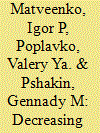

|
|
|
|
|
| Publication |
2013.
|
| Summary/Abstract |
One legacy of the Soviet nuclear program is great quantities of high enriched uranium (HEU) that were used in different research programs. The Institute of Physics and Power Engineering (IPPE), founded in 1946, was (and still is) actively involved in nuclear energy development and application, including fast breeder, naval propulsion and space power reactors. IPPE built a special experimental complex containing critical assemblies and research reactors. During 50 years of research activities, a great quantity of HEU fuel was accumulated. Some of the HEU is still used in critical assemblies, notably BFS (Fast Physical Stand) and a considerable amount of material remains in storage. Some HEU has been shipped off for blend-down and some could be used to fabricate new fuel with reduced enrichment levels. This article describes the issues related to reducing the use of HEU in IPPE research facilities-especially for the BFS critical assemblies.
|
|
|
|
|
|
|
|
|
|
|
|
|
|
|
|
| 6 |
ID:
077015
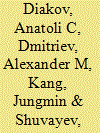

|
|
|
|
|
| Publication |
2007.
|
| Summary/Abstract |
A considerable amount of experience has been accumulated in converting compact research reactors from highly-enriched uranium (HEU) to low-enriched uranium (LEU). Although the details of naval-reactor design are closely held military secrets, during the Gorbachev period, the Soviet Union supplied the Norwegian government with some basic data, including the dimensions and 235U content of the core of the HEU fueled KLT-40 reactor used in some Russian nuclear-powered icebreakers. A group of Norwegian analysts used this information to develop a simple model of the KLT-40 core. We have calculated the neutronics behaviors of variants of these core models as a function of 235U burnup and conclude that the reactors could be fueled with LEU without loss of core life. We also show that simplified infinite-core calculations can be used for such studies
|
|
|
|
|
|
|
|
|
|
|
|
|
|
|
|
| 7 |
ID:
137835
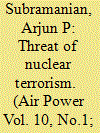

|
|
|